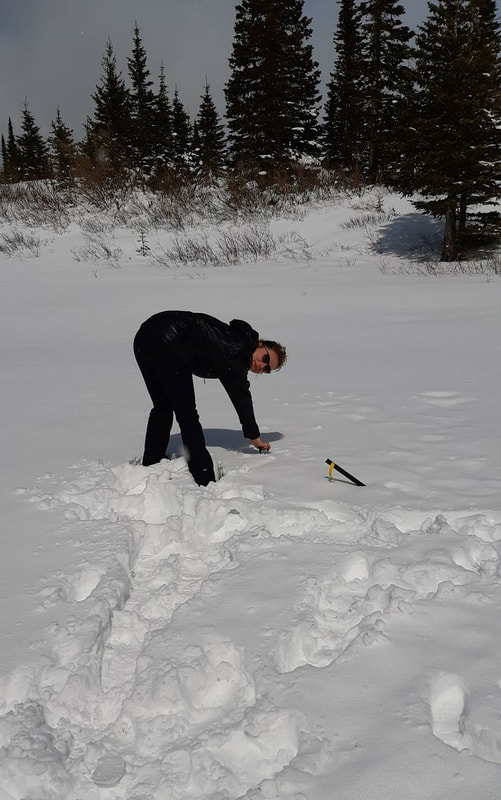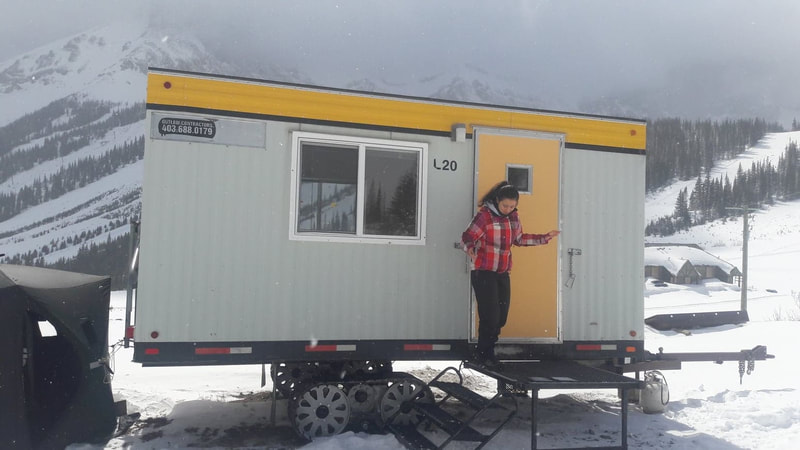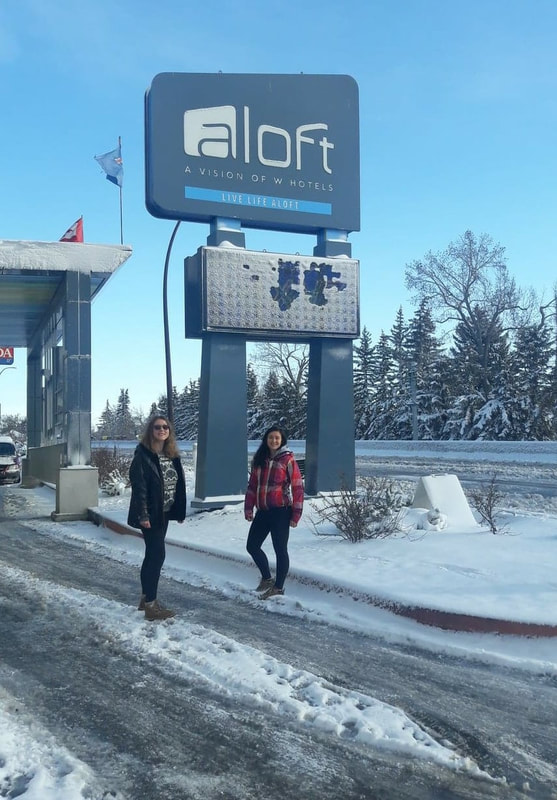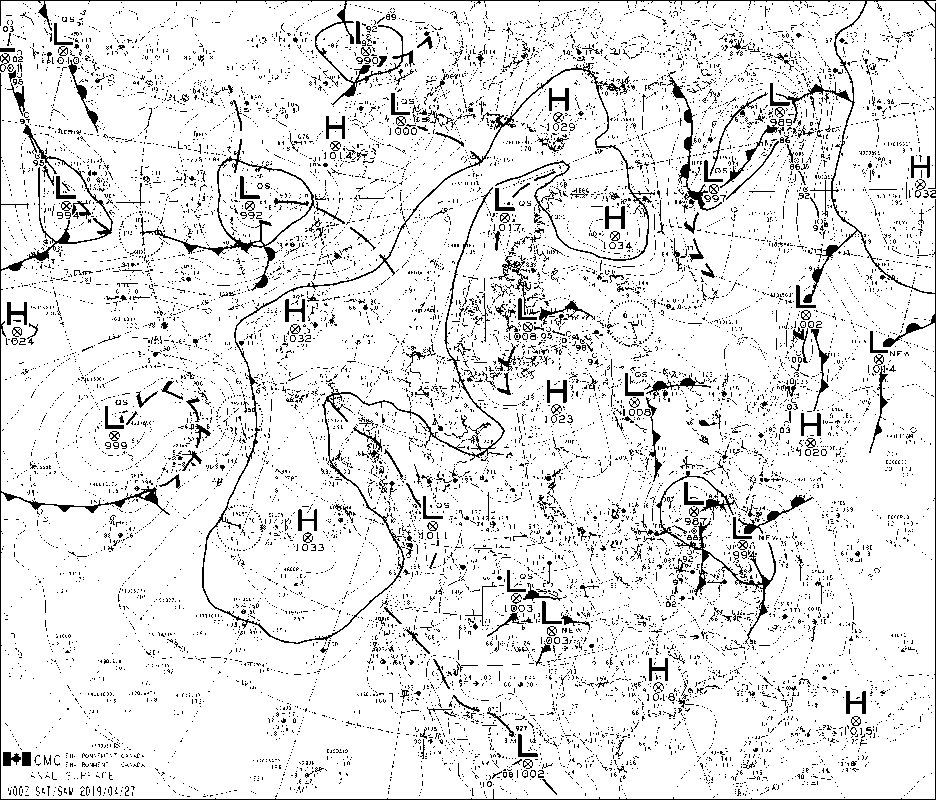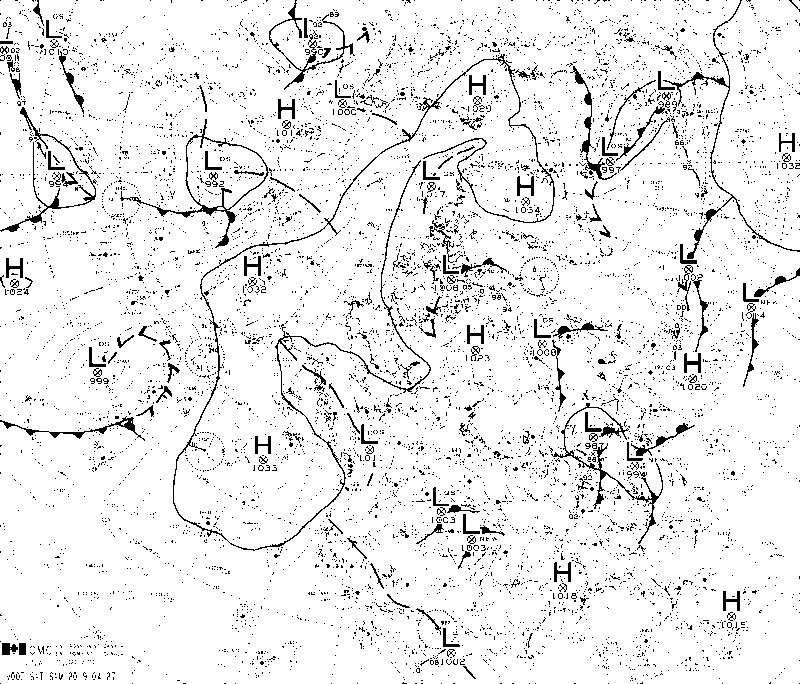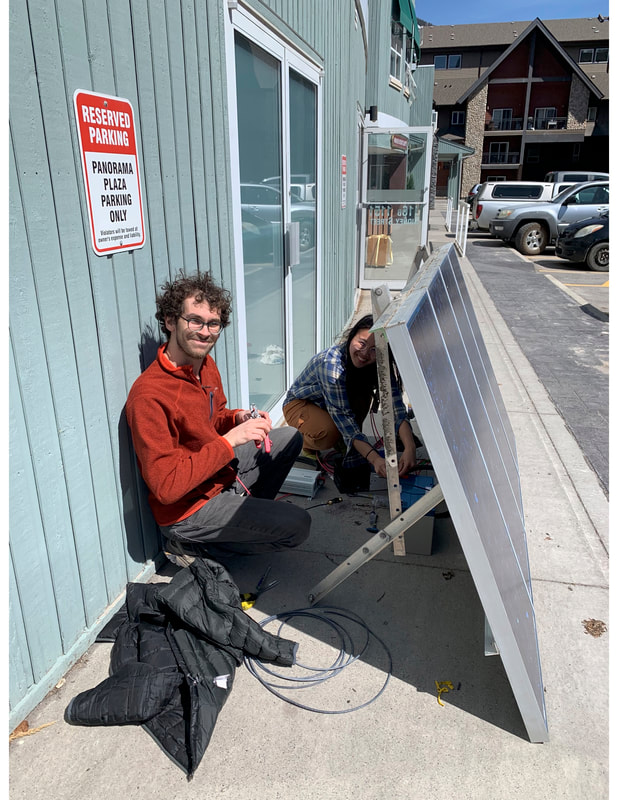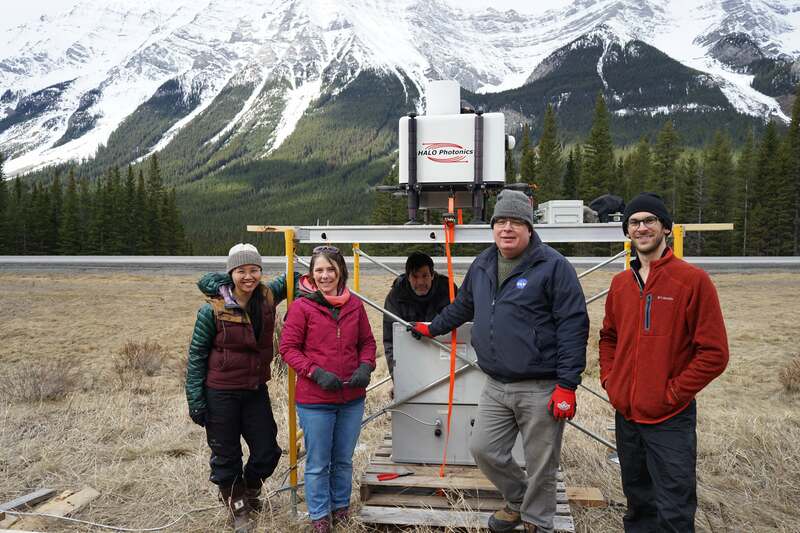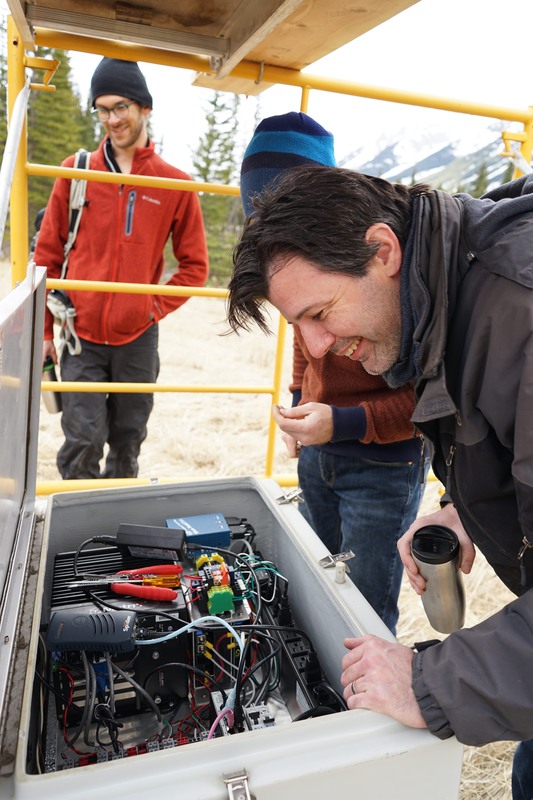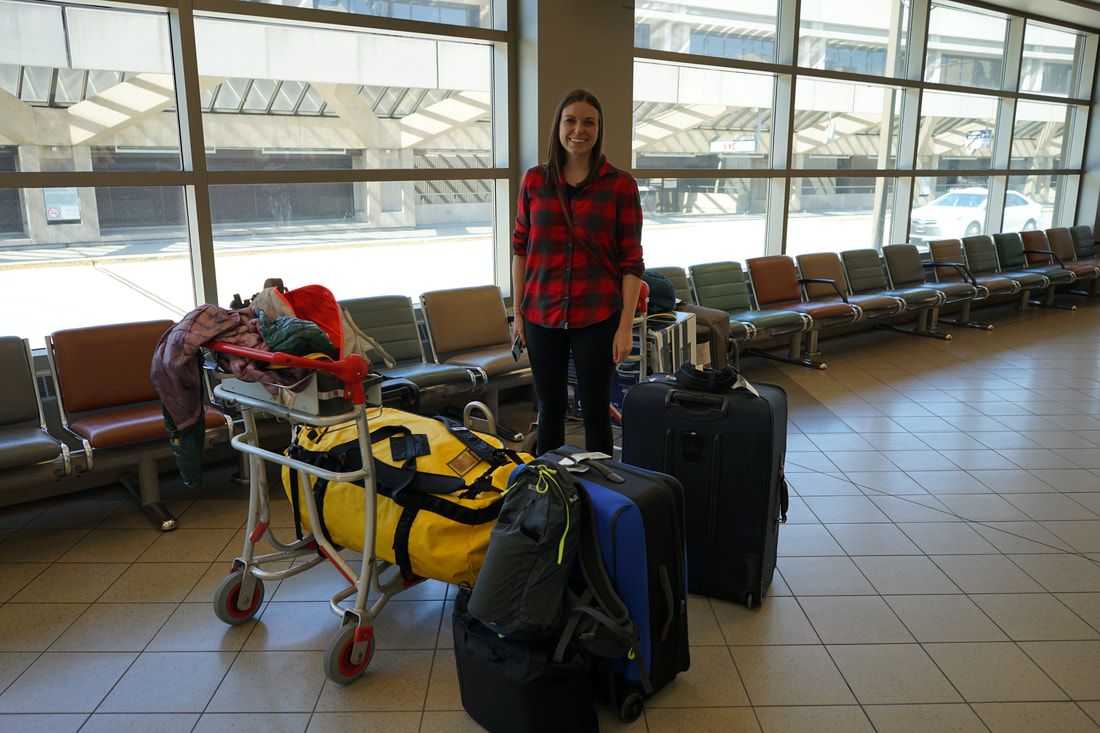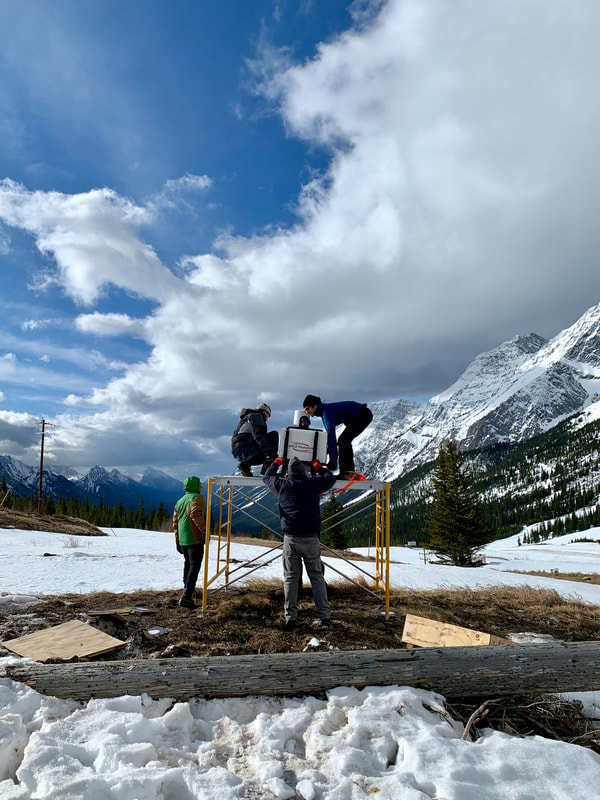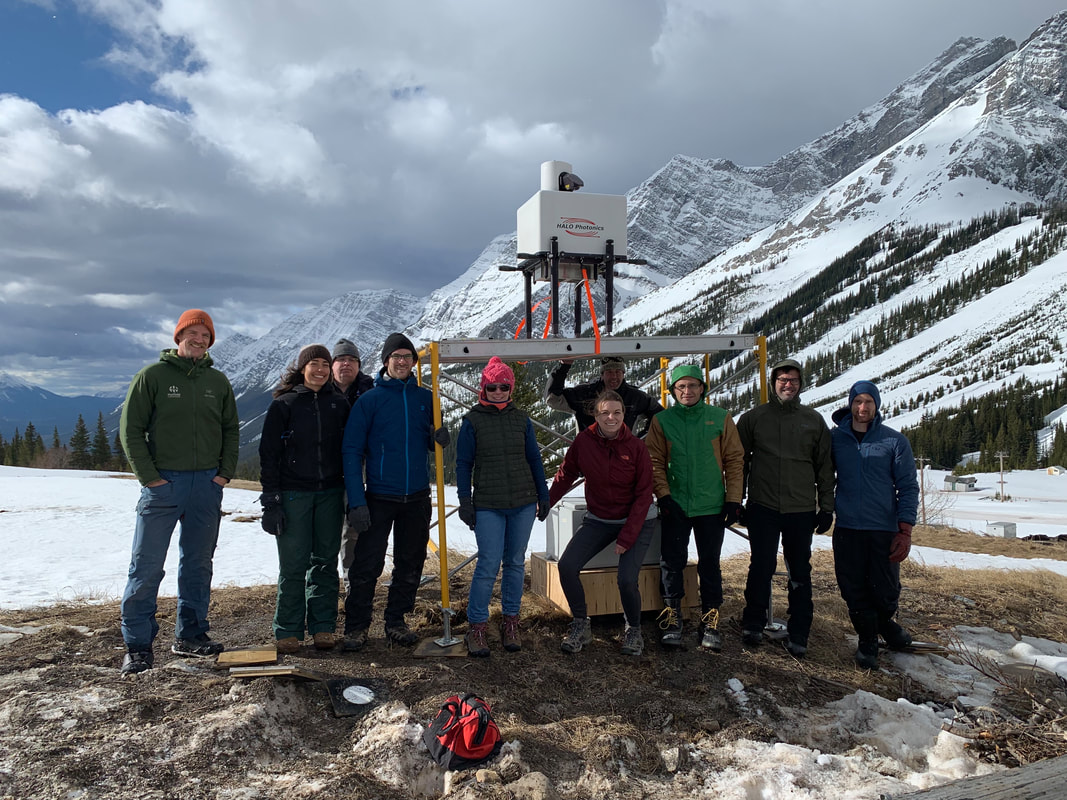|
We arrived in Calgary two days ago, and took some more time to get at the site location because of the impressive storm. We stopped at a nice hotel Saturday night to make sure we would not end up on side of the road like the 60 vehicles we saw on our way to Kananaskis Sunday! We got everything ready yesterday to finally start the real work (actually I should have said training...) this morning. However, we are lucky to start slower than our team mates, with some intermittent snowfall under a beautiful sun! Thanks to Hilary and Andre for teaching us Cecile and Charlie
1 Comment
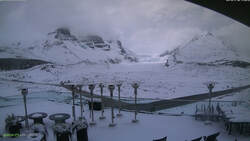 Here are some useful webcam feeds for those travelling on the Icefield Parkway. The beautiful Columbia Icefields are wrapped in snow today. https://www.webcams.travel/webcam/fullscreen/1463249191 Earlier this week, a special weather advisory for a snowstorm over Friday and Saturday was issued. A classic Gulf of Alaska low tracking eastward across the Rockies. This synoptic pattern is known to produce upslope precipitation — lots of precipitation!
News of this forecasted storm, kept all of us on our toes as we scrambled to get everything prepared for the end of the week, before the official date of our field campaign. As we know well, storms don't care about trivial dates and will happen - field campaign or not. Our team quickly buckled down and prepared for an expected busy weekend, making sure that everything was ready for Fortress Mountain. This meant Michael Harwood and Robert Reed from ECCC were hard at work installing the instrumentation at Fortress Junction Service and Fortress Mountain, making sure the instruments were up and running for Friday. Michael and Robert did a wonderful job, transferring knowledge about the ECCC equipment that they are well accustomed to. However, there are a few remaining issues. Currently, the upper and lower Fortress sites do not communicate on the same network as there was no line of sight from both sites. This means that we are unable to access the products from the lower site while at Fortress Mountain (FJS). Although there are a few bugs, we are sure that these issues can be fixed remotely by Peter Rodriguez (ECCC) and the rest of the hardworking team. On Thursday Mathieu and myself worked on the solar panel system for Nipika Mountain Resort, making sure that the solar panels that were generously borrowed from Nipika Mountain Resort worked with our planned system. We were unable to get an actual power draw reading from the laptop without a kill-a-watt electricity monitor. This device has since been purchased, and our plan is to calculate the draw when we get the chance. Meanwhile, Hilary setup the snow macrophotography system and worked with Professor Theriault to work on the snow macrophotography protocols, and conducted a practice carsonde. One matter we kept debating was what the camera setup would look like. We’ve decided to try a fishing tent to take photos in. Hopefully it doesn’t blow away on us like in 2015! Don’t worry, this time it’s staked down! Friday morning the models were forecasting precipitation in Kananaskis country around 1500 MDT (2100 UTC). The team gathered at 8AM whereby everyone was briefed with the expected storm and made a plan for the day. The whole team drove out to the top of Fortress Mountain whereby Robert Reed (ECCC) gave us a a tutorial on the ECCC website designed specifically for the SPADE project and the instruments used. Afterwards, the USask. team (Greg Galloway, Robin Heavens, Andre Bertoncini) plus myself uninstalled the parsivel at Fortress, which was then brought to Barrier Lake and deployed beside the MRR Pro. This same parsivel will be sent over to Nipika after the storm. Thanks to Greg and Robin for getting it setup before the storm, while the rest of us ran some errands in Canmore! Mathieu Lachapelle connected the parsivel to the computer and hooked it up to a power source which converted AC power to 24V DC and made sure that everything was running properly and we left for Fortress. Snow was starting upon our arrival, but still too warm to take snowflake macrophotography. We are now waiting at the trailer itching for some precipitation - snow is coming. Stay tuned! -Juris Almonte Field participants at Fortress Mountain: Hilary Smith, Mathieu Lachapelle, André Bertoncini & Juris Almonte The SPADE set-up group arrived yesterday, and we hit the ground running! Julie, Juris, Mathieu, and I (Hilary) met up in the Calgary airport to go and pick up a few items before heading off to Canmore. We got a bit turned around on our way to the store, but we made it there in the end and got everything we needed. This made for a long time in the car, however it was completely forgotten when we got that first proper view of the mountains! We arrived in Canmore where we met up with everyone at the Coldwater Lab and made plans for the next day. After dinner and groceries in town, we left for the Biogeoscience Institute in Kananaskis Country to get settled into our accommodations and get some (much needed) rest. Set-up for the project began this morning with the installation of the LIDAR at Fortress Mountain with Rob and Mike from ECCC. This was followed up with the install of the weather station and parsivel on scaffolding nearby the Powerline station. Thanks to the folks from the Coldwater Lab for their help with the install and their hard work with the pre-install setup! Weather at the top was pretty gusty with some occasional rain, but when the sun came out it was very pleasant. Juris and Mathieu headed into Calgary to pick up supplies for our solar panel system for Nipika Mountain Resort. The weather forecast for the rest of the week looks like it will be very interesting! Lots of work to keep us busy. Stay tuned…
- Hilary Smith Stay up-to-date with our goings-on via our Instagram (@gwf_spade) and Twitter (@gwf-spade). |

